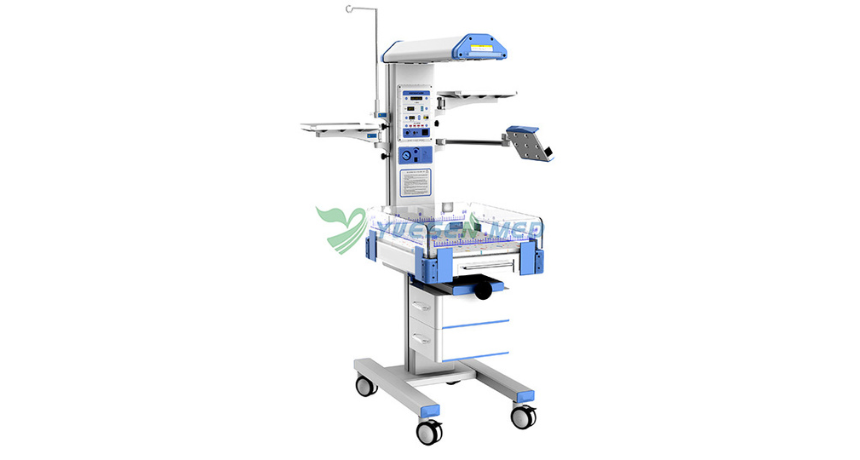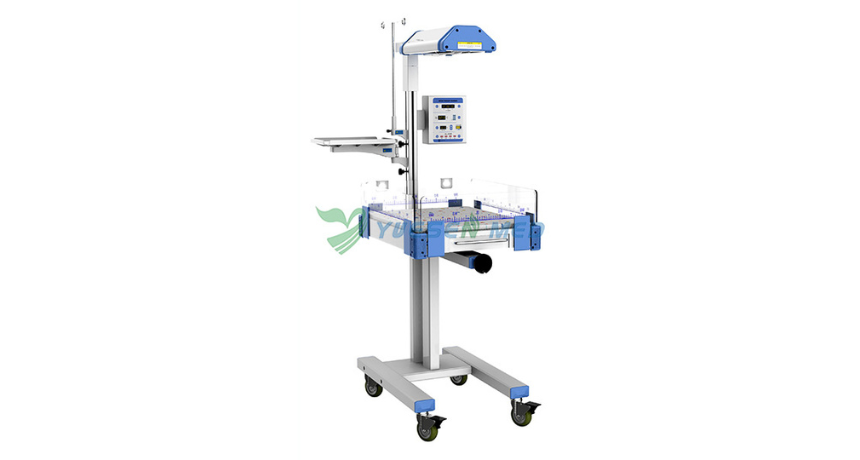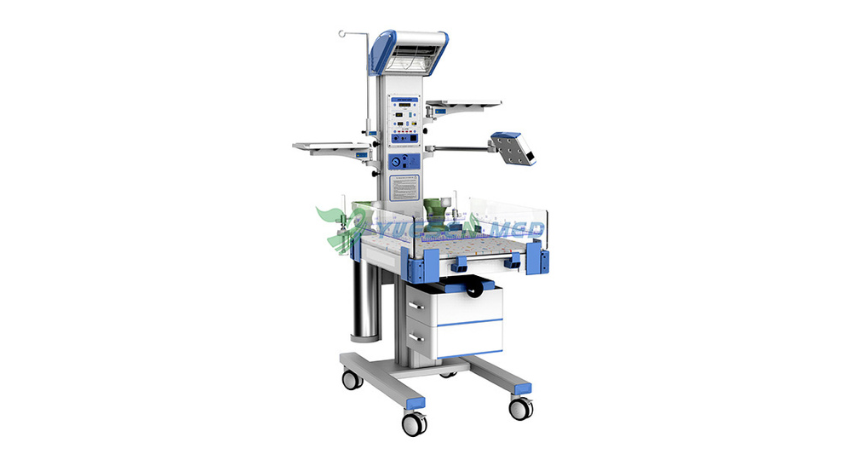Hot Products
YSX500D 50kW DR system set up and put into service in Cambodia.
YSENMED YSX500D 50kW digital x-ray system has been successfully set up and put into service in a hospital in Cambodia.
YSX056-PE serving as a vehicle-mounted x-ray in the Philippines
YSX056-PE 5.6kW portable x-ray unit has been adapted to fit on a truck, to provide mobile x-ray examination service for remote communities in the Philippines.
X Ray Machine To Zimbabwe
x ray machine, 50KW x ray machine
Microscope To Malawi
Achromatic objectives: 4X、10X、40X(S), 100X(S、Oil) Wide field eyepiece: WF10X(WF16X for option) Eyepiece head: Sliding binocular head inclined at 45° Stage: Double layer mechanical stage size 140X140mm, moving range 75X45mm Focusing: Coaxial coarse and
Accuracy in Multiples: The Power of 4-Channel Coagulation Analyzers in Critical Care
Views : 1159
Update time : 2024-10-15 10:43:06
In the high-stakes environment of critical care, every second counts. When it comes to managing patients with complex coagulation issues, having the right tools can make all the difference. Enter the 4-channel coagulation analyzer—a game-changer in how we monitor and manage blood coagulation. In this article, we'll explore the ins and outs of these sophisticated devices, their benefits, and why they are becoming indispensable in critical care settings.

What is a 4-Channel Coagulation Analyzer?
A 4-channel coagulation analyzer is a specialized medical device designed to assess blood coagulation parameters simultaneously across four channels. This means that healthcare professionals can run multiple tests at once, providing a comprehensive view of a patient's coagulation status in a fraction of the time it would take with traditional methods.
Why Focus on Coagulation?
Understanding coagulation is crucial in critical care because it directly impacts patient outcomes. Conditions like sepsis, trauma, and surgery can all lead to either excessive bleeding or thrombosis (blood clots). Monitoring coagulation helps clinicians make timely decisions that can save lives.
Key Features of 4-Channel Coagulation Analyzers
1. Simultaneous Testing
One of the standout features of these analyzers is their ability to perform multiple tests at the same time. This not only saves time but also allows for more accurate assessments, as results can be cross-referenced in real-time.
2. Rapid Turnaround Time
In critical care, waiting for lab results can be detrimental. 4-channel analyzers provide results in minutes, allowing healthcare providers to make swift decisions about treatment plans.
3. User-Friendly Interface
Modern analyzers come equipped with intuitive interfaces that simplify operation. Even under pressure, healthcare staff can quickly learn to navigate these systems, reducing the likelihood of errors.
4. Compact Design
Space is often at a premium in hospitals. The compact design of 4-channel analyzers allows them to fit easily into crowded labs or patient care areas without sacrificing functionality.
How Do 4-Channel Coagulation Analyzers Work?
The Science Behind the Machine
These analyzers utilize advanced technology to measure various coagulation parameters, such as prothrombin time (PT), activated partial thromboplastin time (aPTT), and fibrinogen levels. By using optical or mechanical detection methods, the machine can determine the time it takes for blood to clot, providing critical insights into a patient's coagulation status.
Step-by-Step Process
1. Sample Collection: Blood samples are drawn from the patient, typically via venipuncture.
2. Sample Preparation: The samples are prepared and placed into the analyzer.
3. Testing: The machine runs multiple tests simultaneously, measuring clotting times and other relevant parameters.
4. Result Analysis: Results are generated and displayed, allowing for immediate interpretation by healthcare professionals.
Benefits of Using 4-Channel Coagulation Analyzers in Critical Care
1. Improved Patient Outcomes
By enabling rapid and accurate coagulation assessments, these analyzers help clinicians make informed decisions, ultimately improving patient outcomes. Early detection of coagulation disorders can lead to timely interventions, reducing complications.
2. Enhanced Workflow Efficiency
With the ability to run multiple tests at once, healthcare teams can streamline their workflow. This efficiency not only saves time but also allows staff to focus more on patient care rather than administrative tasks.
3. Cost-Effective Solutions
While the initial investment in advanced technology might be significant, the long-term benefits—such as reduced hospital stays and better patient management—can lead to cost savings for healthcare facilities.
4. Versatility in Testing
These analyzers can be used in various clinical settings, from emergency departments to intensive care units, making them versatile tools in any critical care arsenal.
Challenges and Considerations
1. Training Requirements
Although the user interface is designed to be intuitive, staff still require training to operate the machines effectively. Ongoing education is essential to ensure optimal usage and minimize errors.
2. Maintenance and Calibration
Regular maintenance and calibration are crucial to ensure accurate results. Facilities must have protocols in place to keep the equipment in top shape.
3. Interpreting Results
While the machines provide quick results, interpreting those results requires clinical expertise. Healthcare providers must understand the implications of coagulation parameters to make informed decisions.
Real-World Applications
1. Trauma Care
In trauma situations, patients often present with coagulopathy (abnormal blood coagulation). The rapid assessment capabilities of 4-channel analyzers allow for immediate blood product administration, which can be life-saving.
2. Surgical Settings
During surgeries, especially those involving significant blood loss, continuous monitoring of coagulation is vital. These analyzers provide surgeons with real-time data, enabling them to adjust interventions as needed.
3. Sepsis Management
Sepsis can lead to disseminated intravascular coagulation (DIC), a serious condition that requires close monitoring of coagulation status. 4-channel analyzers facilitate timely interventions that can improve survival rates.
Future Trends in Coagulation Analysis
1. Integration with Electronic Health Records (EHR)
As healthcare technology continues to evolve, the integration of coagulation analyzers with EHR systems will become more prevalent. This will streamline data sharing and enhance patient management.
2. Point-of-Care Testing
The trend towards point-of-care testing is growing, and 4-channel analyzers are likely to be at the forefront. This will allow for even faster decision-making in critical care environments.
3. Artificial Intelligence and Machine Learning
Incorporating AI and machine learning into coagulation analysis could lead to even more accurate predictions and personalized treatment plans based on individual patient data.
Conclusion
In the world of critical care, where every moment matters, 4-channel coagulation analyzers stand out as powerful allies for healthcare professionals. Their ability to provide rapid, accurate, and comprehensive assessments of coagulation status can significantly influence patient outcomes. As technology continues to advance, these devices will likely become even more integral to critical care, helping to save lives and improve the quality of care. Embracing this innovation is not just a step forward in medical technology; it's a leap towards better healthcare for all.
FAQ
What are the main advantages of using a 4-channel coagulation analyzer in critical care?
The primary advantages include rapid and simultaneous testing of multiple coagulation parameters, which significantly reduces turnaround time for results. This allows healthcare providers to make quicker, more informed decisions regarding patient treatment. Additionally, these analyzers enhance workflow efficiency and can lead to improved patient outcomes by enabling timely interventions.
How do 4-channel coagulation analyzers improve patient outcomes?
By providing quick and accurate assessments of coagulation status, these analyzers help clinicians identify potential issues such as bleeding disorders or clotting problems early on. Timely detection allows for immediate treatment adjustments, which can prevent complications, reduce hospital stays, and ultimately save lives.
Are there any limitations to using 4-channel coagulation analyzers?
While these devices offer many benefits, they do have limitations. Proper training is essential for staff to operate the analyzers effectively and interpret results accurately. Additionally, regular maintenance and calibration are necessary to ensure the reliability of the results. Misinterpretation of results due to lack of clinical expertise can also pose risks.

What is a 4-Channel Coagulation Analyzer?
A 4-channel coagulation analyzer is a specialized medical device designed to assess blood coagulation parameters simultaneously across four channels. This means that healthcare professionals can run multiple tests at once, providing a comprehensive view of a patient's coagulation status in a fraction of the time it would take with traditional methods.
Why Focus on Coagulation?
Understanding coagulation is crucial in critical care because it directly impacts patient outcomes. Conditions like sepsis, trauma, and surgery can all lead to either excessive bleeding or thrombosis (blood clots). Monitoring coagulation helps clinicians make timely decisions that can save lives.
Key Features of 4-Channel Coagulation Analyzers
1. Simultaneous Testing
One of the standout features of these analyzers is their ability to perform multiple tests at the same time. This not only saves time but also allows for more accurate assessments, as results can be cross-referenced in real-time.
2. Rapid Turnaround Time
In critical care, waiting for lab results can be detrimental. 4-channel analyzers provide results in minutes, allowing healthcare providers to make swift decisions about treatment plans.
3. User-Friendly Interface
Modern analyzers come equipped with intuitive interfaces that simplify operation. Even under pressure, healthcare staff can quickly learn to navigate these systems, reducing the likelihood of errors.
4. Compact Design
Space is often at a premium in hospitals. The compact design of 4-channel analyzers allows them to fit easily into crowded labs or patient care areas without sacrificing functionality.
How Do 4-Channel Coagulation Analyzers Work?
The Science Behind the Machine
These analyzers utilize advanced technology to measure various coagulation parameters, such as prothrombin time (PT), activated partial thromboplastin time (aPTT), and fibrinogen levels. By using optical or mechanical detection methods, the machine can determine the time it takes for blood to clot, providing critical insights into a patient's coagulation status.
Step-by-Step Process
1. Sample Collection: Blood samples are drawn from the patient, typically via venipuncture.
2. Sample Preparation: The samples are prepared and placed into the analyzer.
3. Testing: The machine runs multiple tests simultaneously, measuring clotting times and other relevant parameters.
4. Result Analysis: Results are generated and displayed, allowing for immediate interpretation by healthcare professionals.
Benefits of Using 4-Channel Coagulation Analyzers in Critical Care
1. Improved Patient Outcomes
By enabling rapid and accurate coagulation assessments, these analyzers help clinicians make informed decisions, ultimately improving patient outcomes. Early detection of coagulation disorders can lead to timely interventions, reducing complications.
2. Enhanced Workflow Efficiency
With the ability to run multiple tests at once, healthcare teams can streamline their workflow. This efficiency not only saves time but also allows staff to focus more on patient care rather than administrative tasks.
3. Cost-Effective Solutions
While the initial investment in advanced technology might be significant, the long-term benefits—such as reduced hospital stays and better patient management—can lead to cost savings for healthcare facilities.
4. Versatility in Testing
These analyzers can be used in various clinical settings, from emergency departments to intensive care units, making them versatile tools in any critical care arsenal.
Challenges and Considerations
1. Training Requirements
Although the user interface is designed to be intuitive, staff still require training to operate the machines effectively. Ongoing education is essential to ensure optimal usage and minimize errors.
2. Maintenance and Calibration
Regular maintenance and calibration are crucial to ensure accurate results. Facilities must have protocols in place to keep the equipment in top shape.
3. Interpreting Results
While the machines provide quick results, interpreting those results requires clinical expertise. Healthcare providers must understand the implications of coagulation parameters to make informed decisions.
Real-World Applications
1. Trauma Care
In trauma situations, patients often present with coagulopathy (abnormal blood coagulation). The rapid assessment capabilities of 4-channel analyzers allow for immediate blood product administration, which can be life-saving.
2. Surgical Settings
During surgeries, especially those involving significant blood loss, continuous monitoring of coagulation is vital. These analyzers provide surgeons with real-time data, enabling them to adjust interventions as needed.
3. Sepsis Management
Sepsis can lead to disseminated intravascular coagulation (DIC), a serious condition that requires close monitoring of coagulation status. 4-channel analyzers facilitate timely interventions that can improve survival rates.
Future Trends in Coagulation Analysis
1. Integration with Electronic Health Records (EHR)
As healthcare technology continues to evolve, the integration of coagulation analyzers with EHR systems will become more prevalent. This will streamline data sharing and enhance patient management.
2. Point-of-Care Testing
The trend towards point-of-care testing is growing, and 4-channel analyzers are likely to be at the forefront. This will allow for even faster decision-making in critical care environments.
3. Artificial Intelligence and Machine Learning
Incorporating AI and machine learning into coagulation analysis could lead to even more accurate predictions and personalized treatment plans based on individual patient data.
Conclusion
In the world of critical care, where every moment matters, 4-channel coagulation analyzers stand out as powerful allies for healthcare professionals. Their ability to provide rapid, accurate, and comprehensive assessments of coagulation status can significantly influence patient outcomes. As technology continues to advance, these devices will likely become even more integral to critical care, helping to save lives and improve the quality of care. Embracing this innovation is not just a step forward in medical technology; it's a leap towards better healthcare for all.
FAQ
What are the main advantages of using a 4-channel coagulation analyzer in critical care?
The primary advantages include rapid and simultaneous testing of multiple coagulation parameters, which significantly reduces turnaround time for results. This allows healthcare providers to make quicker, more informed decisions regarding patient treatment. Additionally, these analyzers enhance workflow efficiency and can lead to improved patient outcomes by enabling timely interventions.
How do 4-channel coagulation analyzers improve patient outcomes?
By providing quick and accurate assessments of coagulation status, these analyzers help clinicians identify potential issues such as bleeding disorders or clotting problems early on. Timely detection allows for immediate treatment adjustments, which can prevent complications, reduce hospital stays, and ultimately save lives.
Are there any limitations to using 4-channel coagulation analyzers?
While these devices offer many benefits, they do have limitations. Proper training is essential for staff to operate the analyzers effectively and interpret results accurately. Additionally, regular maintenance and calibration are necessary to ensure the reliability of the results. Misinterpretation of results due to lack of clinical expertise can also pose risks.
Related News
Read More >>
 What is the Difference Between Radiant Warmer and Phototherapy?
What is the Difference Between Radiant Warmer and Phototherapy?
Apr .19.2025
Radiant warmers and phototherapy are crucial in neonatal care, but they serve different purposes. Let's dive into the nitty-gritty of these two techniques and explore how they differ, and when each is appropriate.
 YSX056-PE portable digital x-ray unit set up in the Philippines
YSX056-PE portable digital x-ray unit set up in the Philippines
Apr .19.2025
YSX056-PE portable digital x-ray unit has been set up in a hospital in the Philippines and the good quality images please the doctors.
 Is an Infant Radiant Warmer Good for Babies' Health?
Is an Infant Radiant Warmer Good for Babies' Health?
Apr .13.2025
What exactly is the infant radiant warmer, and how does it contribute to a baby's health? Let's dive into this topic and explore the ins and outs of infant radiant warmers.
 What is an Infant Radiant Warmer?
What is an Infant Radiant Warmer?
Apr .12.2025
One of the unsung heroes in neonatal care is the infant radiant warmer. But what exactly is it? Let's dive into the world of infant care and explore the ins and outs of this vital device.



